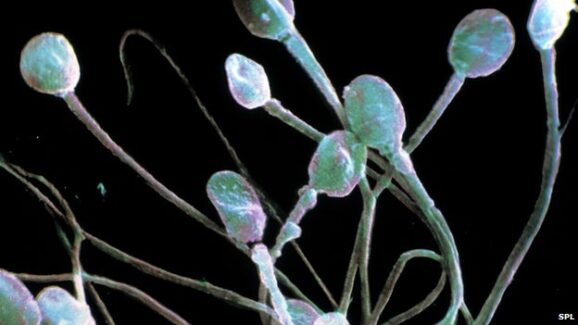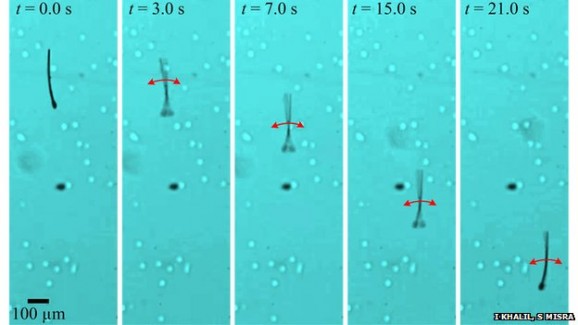Magnet-Controlled Robotic Sperm Is Now A Thing That Exists In The World
 When I first saw a headline about robotic sperm, I thought it was somehow related to the #Yesallwomen phenomenon. For whatever reason, I imagined scientists trying to figure out some way robots could knock up women, cutting men out of the equation entirely. That just goes to show you I’ve been spending way too much time on Twitter, and that I shouldn’t assume too much from a headline. The MagnetoSperm is actually a new gadget about six times the length of a human sperm, and it can be used for medical treatments and even for manufacturing. Oh, and it’s controlled with magnets.
When I first saw a headline about robotic sperm, I thought it was somehow related to the #Yesallwomen phenomenon. For whatever reason, I imagined scientists trying to figure out some way robots could knock up women, cutting men out of the equation entirely. That just goes to show you I’ve been spending way too much time on Twitter, and that I shouldn’t assume too much from a headline. The MagnetoSperm is actually a new gadget about six times the length of a human sperm, and it can be used for medical treatments and even for manufacturing. Oh, and it’s controlled with magnets.
 While it isn’t quite lab-grown, MagnetoSperm was produced in a lab. Researchers at the German University in Cairo and the University of Twente in the Netherlands, designed the device using a strong, elastic polymer to form its body, and painted its head with metal via the electron beam evaporation technique. In an article in Applied Physics Letters, the researchers demonstrate the ability to steer the robotic sperm, which mimics the movement of its real counterparts, which are propelled by flagellum. Like conventional sperm, the movement is generated by a tail that flaps in response to a change in the electromagnetic coils, and the sperm’s magnetic head keeps it oriented in a particular direction. A similar process has been used to steer red blood cells and bull sperm encased in nanotubes.
While it isn’t quite lab-grown, MagnetoSperm was produced in a lab. Researchers at the German University in Cairo and the University of Twente in the Netherlands, designed the device using a strong, elastic polymer to form its body, and painted its head with metal via the electron beam evaporation technique. In an article in Applied Physics Letters, the researchers demonstrate the ability to steer the robotic sperm, which mimics the movement of its real counterparts, which are propelled by flagellum. Like conventional sperm, the movement is generated by a tail that flaps in response to a change in the electromagnetic coils, and the sperm’s magnetic head keeps it oriented in a particular direction. A similar process has been used to steer red blood cells and bull sperm encased in nanotubes.
 The MagnetoSperm is, however, slower than real sperm. It’s six times as long, but it only moves a distance that is roughly half of its own body length per second. Huuman sperm on the other hand, covers its body length several times over in the same span. Still, it’s the precision that’s so impressive here. By changing the magnetic field, researchers can accurately guide the MagnetoSperm wherever they want, which is what opens up its potential applications. Obviously, this can be used for in virto fertilization, or to deliver drugs to specific regions of the body. It could also be used in nano-manufacturing to deposit materials in particular areas.
The MagnetoSperm is, however, slower than real sperm. It’s six times as long, but it only moves a distance that is roughly half of its own body length per second. Huuman sperm on the other hand, covers its body length several times over in the same span. Still, it’s the precision that’s so impressive here. By changing the magnetic field, researchers can accurately guide the MagnetoSperm wherever they want, which is what opens up its potential applications. Obviously, this can be used for in virto fertilization, or to deliver drugs to specific regions of the body. It could also be used in nano-manufacturing to deposit materials in particular areas.
The teams plan to continue working with and refining the MagnetoSperm by making it smaller, faster, and able to navigate more complex environments.












